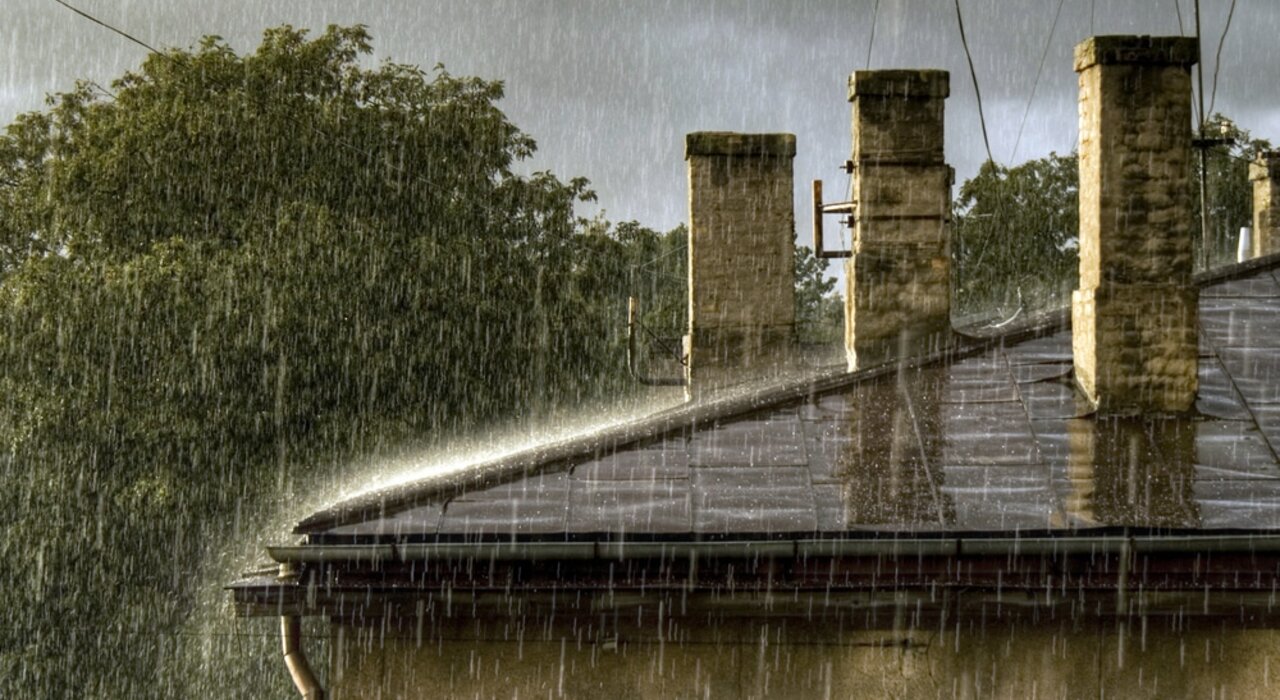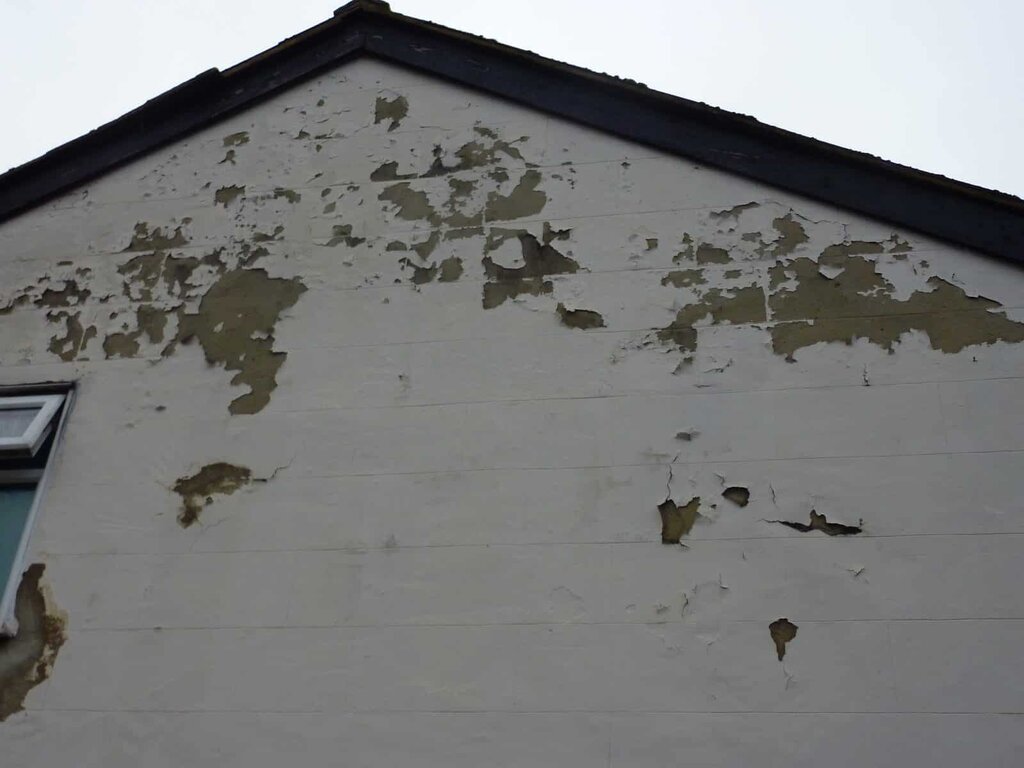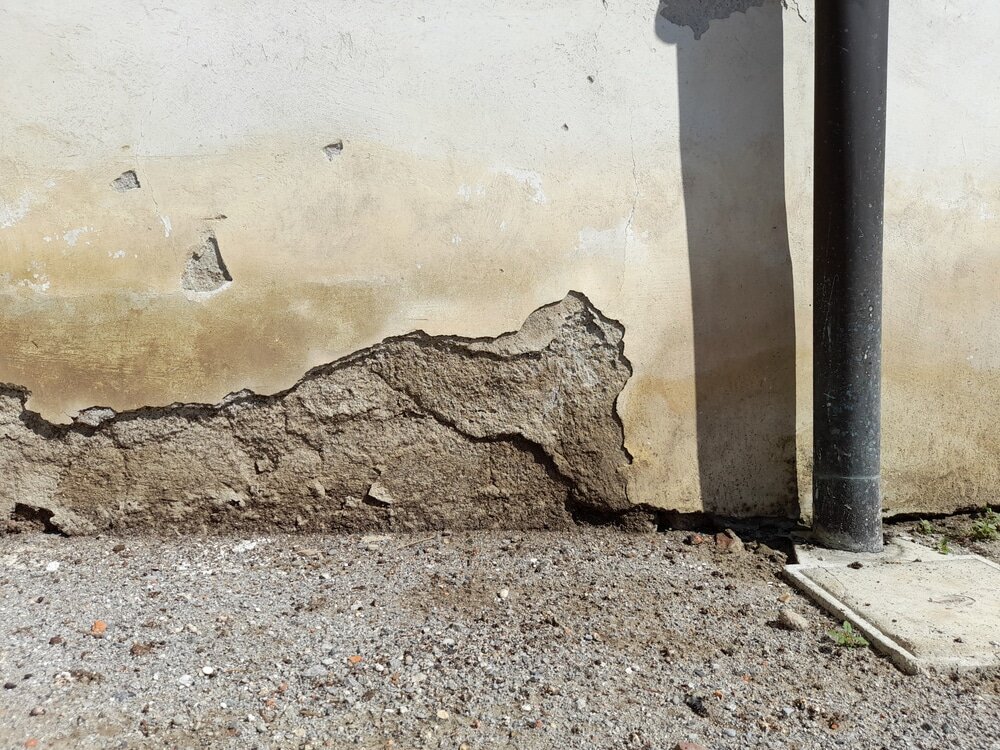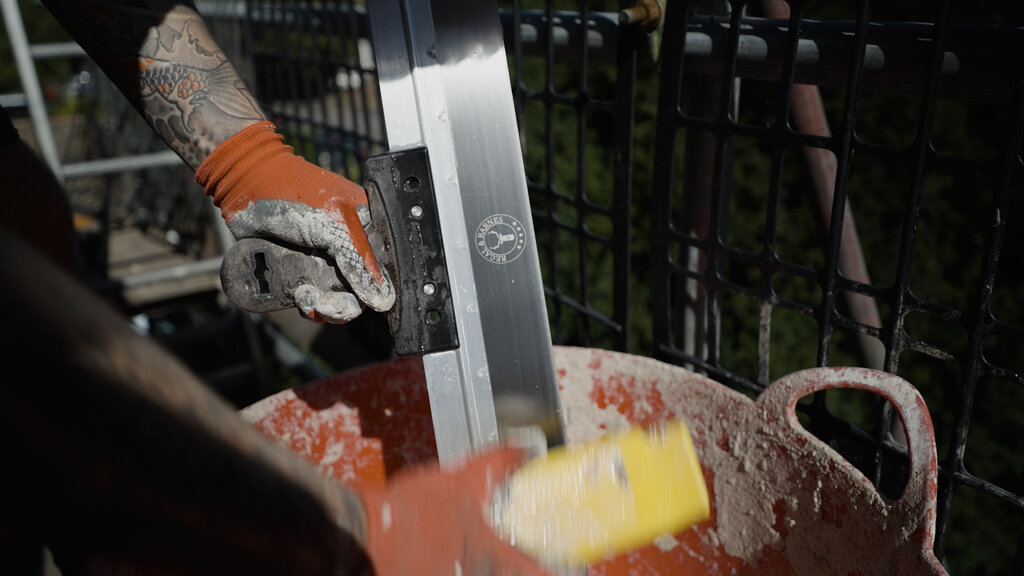
- Compromised adhesion
- Impact of rainwater
- Material dilution
- Surface preparation difficulties
- Microbial growth
- Delayed setting and curing
- Impact on material properties
- Extension of project timelines
- Impaired aesthetic finish
- Risk of system failure
- Water ingress
- Structural degradation
- Dampness and mould growth
- Insulation material degradation
- Increased repair and maintenance costs
- Surface contamination
- Impact on adhesion
- Aesthetic complications
- Reduction in material efficiency
- Increased installation time and cost
- Work interruptions
- Impact on project timelines
- Increased labour costs
- Compromised installation quality
- Reduced work efficiency
- Impaired mobility and productivity
- Material handling complications
- Tool and equipment constraints
- Material wastage
- Exposure to elements
- Contamination
- Handling and application difficulties
- Increased costs and delays
- Mitigation Strategies
Installing external wall insulation and render systems are fundamental aspects of constructing buildings that are energy-efficient, resilient, and compliant with modern building standards. These installations are paramount for protecting buildings from environmental elements, reducing energy consumption, and maintaining internal temperatures. However, the installation process can be incredibly intricate and, when performed under suboptimal conditions such as rain, it may lead to multiple complications and challenges. Rain, particularly persistent or heavy rain, can adversely affect the installation procedure, compromising the efficacy and longevity of the insulation and render systems. The presence of moisture can not only hinder the adhesion of the materials to the wall surfaces but can also introduce a range of other complications like structural damage, material wastage, and delays, which can escalate the overall costs and reduce the performance of the insulation and render systems. This article will explore the specific problems that rain can cause during the installation of external wall insulation and render systems and will also discuss some mitigation strategies to address these challenges effectively. Whether you are a homeowner, a contractor, or a construction manager, understanding these challenges can help ensure that the installation process is smooth and efficient, and results in a robust and durable external wall system.
Compromised adhesion
Adhesion is a critical factor when installing external wall insulation and render systems. It ensures that the materials bond effectively to the wall surfaces, providing stability, longevity, and optimal performance. However, the presence of rain can severely compromise this adhesion, leading to a range of problems and potential failures of the system.
Impact of rainwater
Rainwater, by penetrating the material or lingering on the surface, can interfere with the bonding process of the adhesive materials used in the installation. The moisture can prevent the materials from setting properly, resulting in weak, ineffective, or unstable bonds. This compromised adhesion can lead to the detachment or failure of the insulation and render systems over time, exposing the building to environmental elements and reducing its energy efficiency.
Material dilution
Water from rain can dilute adhesive materials, reducing their viscosity and adhesive properties. This dilution can prevent the materials from adhering properly to the surfaces, necessitating additional applications or adjustments and potentially leading to failures in the insulation and render systems.
Surface preparation difficulties
Rain complicates the preparation of wall surfaces for installation. Ideal surface preparation requires clean and dry surfaces, free of contaminants. Rain not only wets the surfaces but can also introduce dirt, dust, and other contaminants to the wall, affecting the adhesion of the materials and potentially reducing the longevity and effectiveness of the insulation and render systems.
Microbial growth
The moisture introduced by rain can encourage the growth of mould, mildew, and other microbes between the wall and the insulation and render systems. This microbial growth can compromise the adhesion, deteriorate the materials, and pose health risks to the building occupants.
Delayed setting and curing
The setting and curing phase is critical in the installation of external wall insulation and render systems.It allows materials to harden and gain their full strength, ensuring optimal performance and longevity of the system. However, rain can significantly impede this process, leading to delays and compromises in the structural integrity of the applied materials.
Impact on material properties
When materials do not have adequate conditions to set and cure, they cannot develop the required properties, such as strength and adhesion, to function effectively. Rain introduces excess moisture, preventing materials from hardening and reaching their optimal state. This can lead to weakened structural integrity and can make the insulation and render systems more susceptible to damage and wear.
Extension of project timelines
Rain-induced delays in setting and curing can extend project timelines significantly. Extended exposure to rain can require additional days for the materials to dry and cure properly, leading to prolonged construction periods, increased labour costs, and potential contractual penalties.
Impaired aesthetic finish
Rain can also impact the aesthetic finish of the render systems. The extended setting and curing period can result in uneven textures, discolourations, and other surface imperfections, affecting the overall appearance and requiring additional work and resources for correction.
[caption id="attachment_59685" align="aligncenter" width="1024"] render problems[/caption]
render problems[/caption]
Risk of system failure
The inability of materials to set and cure properly can increase the risk of system failure. Ineffective curing may lead to inadequate bonding, reduced strength, and decreased durability, ultimately impacting the performance and lifespan of the insulation and render systems.
Water ingress
In the context of installing external wall insulation and render systems, water infiltration is a critical concern, particularly during rainy conditions. The penetration of rainwater through gaps, seams, or imperfections in the installation can have deleterious effects on both the insulation system and the building’s structural components, leading to myriad issues ranging from structural damage to health risks for occupants.
Structural degradation
Water infiltration can lead to the deterioration of the building’s structural elements, including wood, steel, and concrete. Prolonged exposure to moisture can cause rot in wooden structures, corrosion in steel, and spalling in concrete, compromising the building’s stability and integrity over time.
Dampness and mould growth
Once water infiltrates the insulation and renders systems, it can create damp conditions conducive to mould and mildew growth. These fungi can degrade the materials, reduce the insulation effectiveness, and pose serious health risks, including respiratory problems and allergic reactions, to the occupants.
[caption id="attachment_66681" align="aligncenter" width="1000"] Rising damp[/caption]
Rising damp[/caption]
Insulation material degradation
Many insulation materials are susceptible to water damage. Water infiltration can reduce the thermal resistance (R-value) of insulation materials, diminishing their effectiveness in maintaining internal temperatures and increasing energy consumption in the building.
Increased repair and maintenance costs
The damage caused by water infiltration often necessitates extensive repairs and maintenance, involving the replacement of damaged materials and rectification of affected areas. This can translate to high costs and considerable inconvenience to building owners and occupants.
Surface contamination
Surface contamination is a substantial concern during the installation of external wall insulation and render systems in rainy conditions. Rainwater can carry diverse contaminants, such as dirt, dust, algae, and pollutants, which can adhere to the wall surfaces, impacting the quality and effectiveness of the installation and leading to potential aesthetic and functional complications.
Impact on adhesion
Contaminants on wall surfaces can impede the adhesion of insulation materials and renders, potentially leading to weak bonds and decreased structural stability. This compromised adhesion can affect the overall performance and longevity of the insulation and render systems, leading to potential failures and increased maintenance needs.
Aesthetic complications
Surface contaminants can impair the aesthetic finish of the render systems, causing discolourations, uneven textures, and other imperfections. Correcting these aesthetic issues can be labour-intensive and costly, requiring additional applications, treatments, or even system removal and reinstallation in severe cases.
Reduction in material efficiency
The efficiency of insulation materials and render systems can be diminished by contaminants, impacting their thermal resistance and protective properties. This can lead to increased energy consumption and decreased protection against environmental elements, compromising the comfort and safety of building occupants.
Increased installation time and cost
Dealing with surface contamination often requires additional cleaning, preparation, and correction steps, prolonging installation times and increasing labour and material costs. These additional steps can impact project timelines and budgets, leading to potential disputes and dissatisfaction among stakeholders.
Work interruptions
When installing external wall insulation and render systems, the advent of rain can lead to considerable work interruptions. These disruptions can have multifaceted repercussions, influencing project timelines, workflow efficiency, and overall installation quality. Understanding the impact of these work interruptions and managing them effectively is crucial to maintaining the progress and standards of the project.
Impact on project timelines
Work interruptions due to rain can significantly extend the installation timelines. Every interruption necessitates a halt in work, reorganisation of schedules, and, often, waiting periods for suitable weather conditions to resume work. This can lead to delayed project completions and can have cascading effects on other interconnected tasks and overall project timelines.
Increased labour costs
Interruptions lead to an idle time where the workforce is unable to proceed with the installations, but labour costs continue to accrue. This inefficiency translates to increased labour costs and can strain the project’s budget, potentially leading to conflicts between contractors and clients over escalated costs.
Compromised installation quality
Frequent starts and stops due to rain interruptions can compromise the quality of installation. Rushed work in an attempt to beat the rain, or resumption of work on surfaces affected by rain, can lead to mistakes, inconsistencies, and oversights, affecting the structural integrity and performance of the installed systems.
Reduced work efficiency
Rain and adverse weather conditions can markedly reduce work efficiency during the installation of external wall insulation and render systems. The implications of reduced efficiency are manifold, affecting the speed, quality, and cost of the installation process, and necessitating strategic interventions to mitigate the adverse impacts.
Impaired mobility and productivity
Rain can create hazardous working conditions, with slippery surfaces increasing the risk of accidents and impairing the mobility of workers. This can slow down the installation process as workers need to move more cautiously, leading to decreased productivity and extended timelines.
Material handling complications
Handling and applying materials in the rain can be challenging, with an increased risk of material wastage, contamination, and improper application. This can necessitate additional time and resources to correct errors and replace wasted materials, further reducing overall work efficiency.
Tool and equipment constraints
The efficiency of tools and equipment can be compromised in wet conditions. Rain can interfere with the operation of electrical equipment, and moisture can affect the calibration and functioning of precision tools, potentially leading to inaccuracies and delays in installation.

Material wastage
The installation of external wall insulation and render systems requires precision and care, particularly in managing materials. Rain can exacerbate the risk of material wastage, which can have significant financial implications and can also affect the quality and timeline of the installation project.
Exposure to elements
Materials such as insulation foam and render can be severely damaged by exposure to rain. When exposed to moisture, these materials can swell, deform, or lose their adhesive properties, becoming unsuitable for application and leading to unnecessary wastage.
Contamination
Rainwater can carry a variety of contaminants such as dirt, dust, and debris, which can compromise the integrity of the materials. Contaminated materials might not adhere properly, can exhibit uneven textures, and can impact the aesthetic and functional quality of the finished project, often necessitating removal and replacement.
Handling and application difficulties
Wet conditions can make the handling and application of materials more challenging, leading to spillage, uneven application, and other mistakes that result in material wastage. Correcting these issues can be time-consuming and can increase material and labour costs.
Increased costs and delays
Material wastage due to rain leads to increased project costs as wasted materials need to be replaced, and additional labour is required to rectify errors. Moreover, the time taken to reorder and replace materials can cause significant delays in project timelines.
Mitigation Strategies
Despite these challenges, several strategies can mitigate the impact of rain during installation:
- Scheduling: Plan the installation during a period with a favourable weather forecast, avoiding times with high probabilities of rain.
- Temporary Shelters: Erecting temporary shelters or covers can protect the work area from rain, allowing for continuous work even during unfavourable weather.
- Proper Sealing: Ensure all seams, joints, and openings are properly sealed to prevent water ingress during and after installation.
- Surface Preparation: Thoroughly cleaning and drying surfaces before installation can help in achieving strong adhesion and reducing contamination.
- Moisture Resistant Materials: Use materials and products that are designed to resist moisture and can set and cure effectively in damp conditions.
